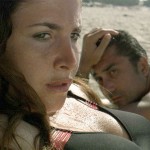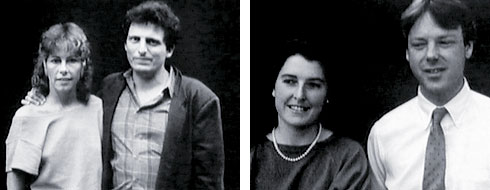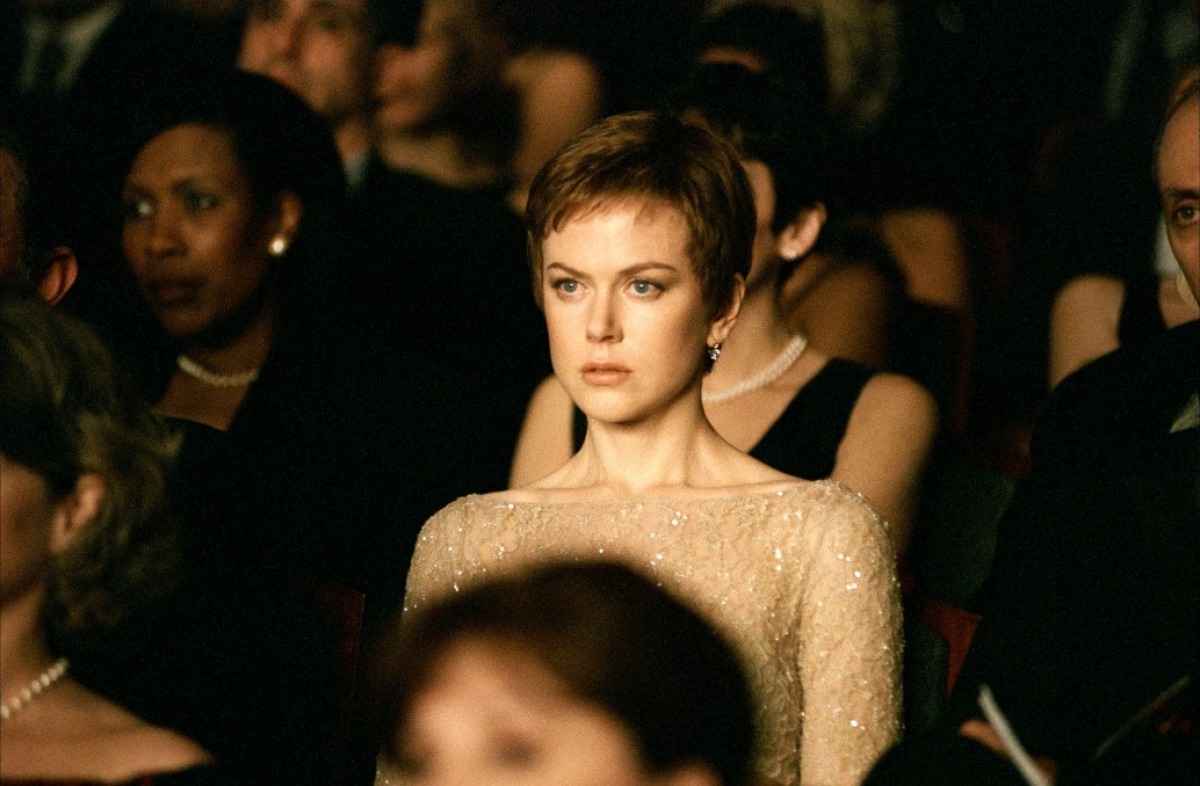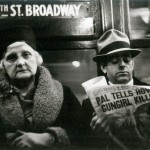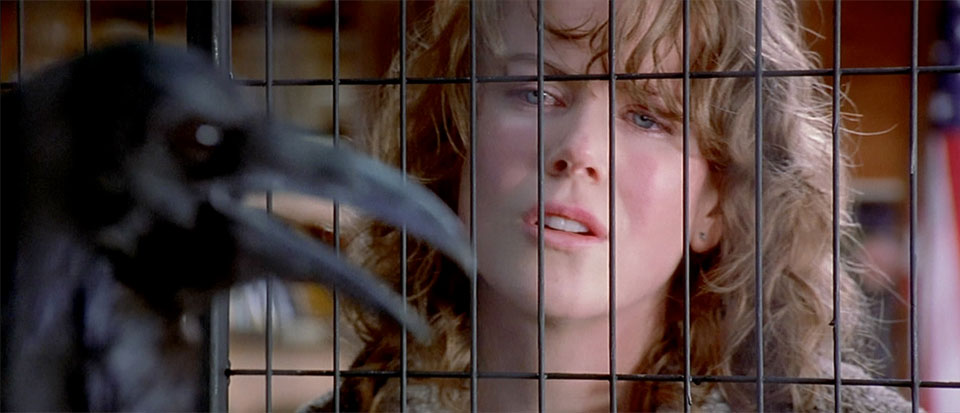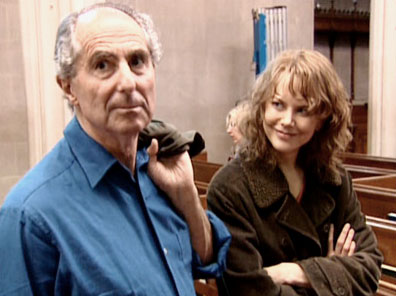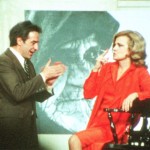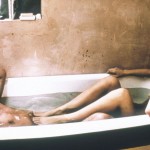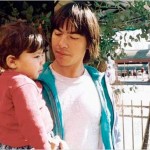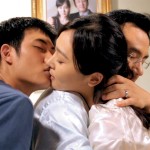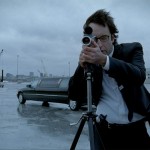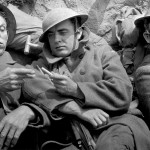Dir. by Caveh Zahedi
This essay was presented at the 2005 conference of the South Atlantic Modern Language Association.
– – –
When asked recently about the trend toward reality programming on television, filmmaker Caveh Zahedi called it a “good thing,” arguing that, despite the inevitable and corrupting influences of advertising and profit margins, reality TV does satisfy, to a certain extent, the viewing public’s craving for the “genuine article.” “Reality is where it’s at,” Zahedi said. “It’s where people ‘live,’ it’s what’s deep and true.” “Genuine, “reality,” “live,” “deep,” and “true” are, of course, among the most loaded of terms in discussions of documentary filmmaking, a fact not lost on Zahedi, who has spent the majority of his career blurring the lines between fact and fiction in his own peculiar brand of autobiographical cinema.
In his official filmography, Zahedi lists four features and three shorts. A Little Stiff, his 1991 feature debut, co-directed with Greg Watkins, re-enacts his failed attempt to win the affection of a fellow art student. Constructed almost entirely of static master shots, the film is quite different formally from his other work — he has described it as an “aesthetic reaction to the kind of by-the-numbers filmmaking that [he was] being taught in film school” — but it introduces many of what would become Zahedi’s signatures. He himself stars as “Caveh Zahedi,” a sincere and strangely charismatic filmmaker whose charm (or off-putting eccentricity, depending on one’s general opinion of him) stems from his refusal to mask what he considers his most basic human desires, opinions and, perhaps most notably, his faults behind the guise of socially-constructed, “acceptable” behavior.
That’s not to say, though, that Zahedi is a hedonist. Far from it, in fact. When exploring the most shameful and transgressive aspects of his nature, as he does, for example, with unflinching candor in his most recent feature, I Am a Sex Addict, there is actually a conspicuous element of moral instruction in his work. Rather, what interests Zahedi is what he consistently refers to as the “ego” — that manifestation of self-image that each of us performs in the day-to-day narrative of our public life. For Zahedi, the problem of the ego touches upon the most fundamental questions of life, art, and (for lack of a better word) God, all of which, in his view, are inextricably intertwined. As man lost faith in the Divine, Zahedi argues, the artist grew in self-importance — no longer a humble servant of Creation but, instead, a new kind of hero: the artist/performer as celebrity. “This problem of the ego in art,” Zahedi writes:
stems in part from the fact that our self-worth has been severely eroded. To compensate for this erosion, artists have tended to emphasize their specialness, and to attempt to make themselves appear better than those around them. This is a big problem for the arts because if all art is in fact “channeled,” then Art rests on a connection to the Source of all creation. The problem with the ego in art is that it destroys this connection to the source by positing itself as the source, much like the Satan figure in Milton’s Paradise Lost.
By virtue of its mechanical ability to capture and re-present photographed reality, or so the argument goes, film has a unique relationship with the ego. On the one hand, a camera establishes a power relationship not unlike Foucault’s panoptic gaze — and, indeed, Zahedi has cited Sartre’s policeman as a metaphor for the situation. Like Heisenberg’s uncertainty principle, there’s the sense that a camera — or an editor’s cut, for that matter — inevitably distorts “reality” by the very act of its observation. Under the scrutiny of a spotlight, the guilt and self-hatred we’ve internalized feel threatened with exposure, and so the ego blossoms, becoming large in order to protect its own integrity. On the other hand, film is also uniquely shaped by randomness, or by what Zahedi describes as “Fate or Reality or God.” It’s that peculiar aspect of the cinema that he calls a “Holy Moment” in Richard Linklater’s Waking Life. Because God is manifest in all of creation, and because film is able to capture and re-present those manifestations, the cinema, once loosened of ego, can reorient our perspectives not only toward the arts but also toward the beautifully varied and complex creation in which we live.
In each of his films since A Little Stiff, Zahedi has attempted to create a “complex dialectic” between these two qualities of cinema, a dialectic, more or less, between “the will” and “chaos.” In order to do so, he’s employed very particular narrative and formal strategies, the most essential of which is his devotion to autobiography. Zahedi has jokingly referred to his on-screen persona as a “Mascot of Humanity,” as if he were somehow redeeming us all through his willing sacrifice to this artistic project. In I Don’t Hate Las Vegas Anymore, he dispenses with his script entirely, trusting, instead, that God will become revealed in the chaos of filmed life. In both I Was Possessed by God and Tripping with Caveh, Zahedi ingests large doses of hallucinogenic mushrooms in an effort to completely obliterate, temporarily, his own ego. And in his latest work, I Am a Sex Addict, he has taken an almost-Brechtian turn, carefully balancing the intellectual distance of meta-narrative with the emotional immediacy of “real” human experience.
Which brings me, finally, to In the Bathtub of the World. Zahedi has written of the film:
[It] exploits the most democratic genre that exists, the home movie, in order to reveal the workings of the divine in all of our lives. I had no idea what would happen in the film, but I knew that only a subtle combination of will (demanding of myself that I shoot one minute everyday) and surrender (I would try to listen each day to “hear” what I was supposed to do that day) would lead to the result that I desired, namely a film that would also be a work of art, meaning a work that has in some way been channeled.
To approach In the Bathtub of the World from Zahedi’s perspective, then, would see it as a document of a life — a representative life — freed of the fictions of ego. If we take him at his word, we must assume that the Caveh we “meet” on-screen is the “real” Caveh. When he looks into the camera and makes a frank confession like, “I had a wet dream this morning” or “I have a problem. I don’t know how to live,” we must trust that these statements — in combination with the unspoken language of his facial and body movements and the aesthetic effect of the cinematic reproduction — are as honest an articulation of his immediate experience as he is capable of expressing. “In that particularity” of his own experience, “there is universality,” he has said. “Your life is meaningful and unique. . . . It is the expression of creation happening.” As far as I can tell, it is Zahedi’s deeply sincere belief that the socially-constructed ego-masks we wear degrade human worth and human relationships, and In the Bathtub of the World is his purest and most egalitarian (if such a word is appropriate here) argument for the healing power of honesty.
Okay, so two important points need to be made here.
First, we’ve gathered here this morning to participate in a panel called “Reality Effects: Documentary in Film, TV, and Video.” And so I assume that, after watching the first few minutes of the film, and after listening to this overview of Zahedi’s career and guiding principles, at least a few of you are skeptical. If so, you’re certainly not alone. His work is routinely derided as “narcissistic and vain, in the pejorative sense” (to quote a great line from Bathtub). His intrusive use of the camera — for example, turning it on friends, family, and strangers against their expressed wishes — has been condemned as unethical. Popular critics often dismiss his films simply for being banal and boring. (In fact, on their DVD commentary, Zahedi and co-editor Thomas Logoreci recite by memory lines from Bathtub‘s original reviews: “There is no art here” and “The year 2000 couldn’t come soon enough.”) And then, of course, there are the theoretical problems of any post-Enlightenment aesthetic that calls upon transcendence or mystification for its epistemology.
My second point is something of a confession. Despite my own reservations, I really like most of Zahedi’s films, and Bathtub, in particular. I’ve probably watched it fifteen times now, and I never fail to be moved by Caveh’s humor and sincerity. I suspect this speaks to my own peculiar and evolving ideas about art, democracy, humanism, and (again for lack of a better word) God, but it is also testament, I think, to Zahedi’s skill as a filmmaker. And so, with the remainder of my time, I want to begin to look more closely at the formal strategies he employs here in his effort to dig “deep” into reality.
The first observation worth noting is that, despite Zahedi’s frequent calls to a kind of divine intervention, there is very little connecting his cinematographic style to that of the filmmakers most often associated with the term “transcendental.” Tarkovsky’s demand that images spring from the memories or “subjective impressions” of the author may have influenced Zahedi’s general approach to filmmaking — he has even cited, as a direct inspiration for Bathtub, Tarkovsky’s discussion of a theoretical film sculpted from the entirety of a single person’s filmed life — but little of the Russian’s uncanny, poetic logic is apparent here. Likewise, Bresson’s formal rigor, Ozu’s meticulous shot breakdowns, and Dreyer’s long tracking shots are all conspicuously absent.
Bathtub also does not sit comfortably beside the films of other prominent autobiographical filmmakers. Although it raises interesting questions about, say, the nature of addiction and the sacrifices of art-making, Bathtub does not craft a specific argument along the lines of the essay-like films of Ross McElwee or Agnes Varda, for example. If Bathtub can be described as documentary filmmaking, then it’s a strange hybrid of documentary, performance art (here, I’m thinking specifically of Tehching Hsieh’s Time Piece, in which Hsieh photographed himself punching a time card every hour for a year), and also experimental filmmaking. Certain shots in the film are reminiscent, for example, of Jim Jennings’ meditations on the beauty that is to be found in the everyday. I especially like Zahedi’s strangely affecting compositions of stickers affixed to his bathroom tile and the shots of sunlight pouring through his apartment windows.
Like I Don’t Hate Las Vegas Anymore, Bathtub is, in its final form, a deceptively conventional narrative. Granted, it originated from an unconventional conceit, but Zahedi has crafted from the raw footage a collection of compelling (if elliptical) stories. Assuming that he did, in fact, shoot at least one minute each day for a year, then his 80-minute film is cut and pasted together from approximately one-fifth of the available footage, allowing ample room to pick and choose which particular stories to develop. Among the narrative strands weaving through Bathtub, we see Zahedi’s battles with sex-, food-, celebrity-, and art addiction; we watch him struggle to survive as a poor independent filmmaker, teaching classes, applying for grants, and acting in others’ films in order to make a living; we experience the very real drama of his family life, particularly when his father suffers a massive heart attack, and Caveh, visibly shaken, fears for the man’s life; we get to share in the mundane details of an average routine — vacuuming, mailing letters, cooking dinner, traveling; and, most essential of all, we watch the evolution of Zahedi’s relationship with his live-in girlfriend (and now wife), Amanda Field. I’m tempted to call Bathtub a docu-romantic-dramedy (or something like that).
Zahedi’s editing strategy is apparent from the opening moments of the film. The first shot is a medium-close-up of his almost-motionless face, a quiet, static image followed immediately by the more lively and kinetic scenes in which Amanda cuts his hair and Caveh discovers the contours of his own skull. His entry for January 4 th is an efficient narrative in miniature. He begins by echoing the opening shot in another direct confession to the camera (a recurring motif throughout the film), then cuts relatively-quickly to close-ups of a Frank Black CD and the front of a CD player, before pushing back to a medium-long shot of Caveh dancing. Another close-up, this time of a tape recorder, then a jump-cut confessional shot. January 6 th opens with a nicely-composed, still-life image of sunlight hitting shelves of books and fruit, followed by a shot of his kitchen window and the green wall on the other side.
I mention the specific shot-pattern because, in the course of writing this paper, I’ve realized that there are two main reasons I find Bathtub so improbably watchable. The first is the complex rhythms of the piece — what Leo Charney calls the “peaks and valleys” of narrative. Even in that opening sequence I’ve just described, a sequence that lasts barely three-and-a-half minutes, Zahedi varies, quite deliberately, the shape and color of felt time. Juxtaposed against the quick pace of the earlier sequence’s efficient story-telling, those static images of light and shadow are made all the more strange and new. Likewise, the shot of Caveh’s body in motion, dancing ecstatically to a Frank Black song, is especially surprising after we’ve witnessed his first two, staid confessionals. Zahedi’s greatest talent, in fact, might be as an editor. I Am a Sex Addict is an even more impressive exercise in precise modulations of tone.
Finally, though, I must concede that the greatest source of pleasure in this film is, for me, Caveh himself. In the Bathtub of the World seems to prove that a compelling narrative can be shaped from the “real” moments of “real” life, which shouldn’t come as too great a surprise, I suppose, to anyone who has read a decent autobiography or memoir. But what of the ego? And what of its relationship to cinema? Zahedi has said that a camera has the unique ability to capture “truth”: “You want to be accepted for the true self, not the false front. . . . . Love me despite all this.” Ultimately, despite my intellectual resistance as a critic, I find myself of the same mind as one of Zahedi’s film students, who, given a moment alone with his camera, looks it in the eye and says, “Caveh, I was touched by your sincerity.”



